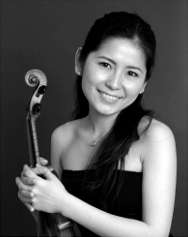|
Back
Conductor's Fantasia New York
Alice Tully Hall, Lincoln Center
11/12/2011 -
Carl Philip Emanuel Bach: Symphony Number 4 in G Major, Wq.183/4, H. 666
Georg Philipp Telemann: Suite from Musique de Table, 3ème Production in B flat, TWV 55: B1
Johann Sebastian Bach: Sinfonia from Cantata 42 “Am Abend über desselbigen Sabbata”
Joseph Haydn: Symphony Number 83 in G minor (“La Poule”)
Juilliard415, Ton Koopman (Conductor)

T. Koopman (© Eddy Posthuma de Boer)
Had Ton Koopman conducted the Liebestod, the Pathétique, and Hindemith’s funeral music for King George VI, it still would have been a jolly, festive, party. However one conceived Mr. Koopman before this matinee performance, his physical presence is one of total joy.
Mr. Koopman, an iconic figure in so called “ancient music”, has been traveling around America, not with his usual Amsterdam Baroque Orchestra, but with American equivalents. Some are dedicated “traditionalists”, some are drawn from mainstream orchestras. No matter where he goes, though, the diminutive, delightful Mr. Koopman has made his mark.
With only his reputation, New Yorkers eschewed a balmy autumn day and flocked into Alice Tully Hall, since Mr Koopman was taking on Juilliard415, apparently all brilliant musician in their own right, who have become practitioners on ancient instruments (or at least reproduced ancient instruments). (The name comes from the pre-Bach pitch vibration for A, not our 488 vibes per second.) Not all of the notes were perfect–but one would imagine subduing the valveless French horn to be like subduing a herd of Assam rhinoceroses. Still, Mr. Koopman made a good show, and offered a few surprises, in his characteristic program.
The greatest surprise was Mr. Koopman himself. He dances on stage, waits a few seconds and then prances and jigs through his music. No baton is necessary, for his hands cued in everybody, he jumped through the tempo changes, and appeared to be a Christmas elf, albeit an elf who is the supreme practitioner of Bach cantatas and oratorios, a master of harpsichord and piano, and is, amongst other honors, President of the International Buxtehude Society.
No choral works, no piano or harpsichord, no Buxtehude yesterday, alas. Perhaps next time. This time,he began with light fluffy symphony by C.P.E. Bach. Carl had little use for his Papa–all those monotonous fugues and chaconnes and liturgical sleeping pills. Instead, he composed (and told Mozart to compose) “sugar” music, light and dainty and melodious.
Mr. Koopman obliged. There were plenty of mistakes, and the two horn players never did manage to train their dinosaur instruments. But the tempo was light, and Mr. Koopman was wonderfully fleet and light on his feet.
The Juilliard 415 does not make the brightest sound, and it can sound almost dull in the strings, though oboes gave a trumpet-like color. But this probably the sound heard by the composers, so we put up with it.
Mr. Koopman continued with one of Telemann’s works–a suite from his thousands upon thousands of pieces. Unlike Vivaldi, though, Georg Philipp never was accused of repeating himself. He incessantly traveled, picking up dances, songs and harmonies from Poland to Italy.

N. Iwata (© Lake George Chamber Orchestra)
This work was French mainly. Seven wonderful dances with the most delicious violin solo by Concertmaster Nanae Iwata, setting the joyous sound for the whole piece.
Teleman also had a Postillon, which I thought was limited to the postman’s bell sound in Bach’s famed Capriccio. No, Teleman used the same octave ringing, the 18th Century equivalent of the ice-cream cart bell.
The second half brought a Bach sinfonia, followed by Haydn’s “Hen” Symphony. More orthodox listeners might say that he emphasized the clucking and cawing too much, but Haydn did have his sense of humor. The work was mostly in the minor key, but the it had a major effect.
Keeping with his good spirits, Mr. Koopman, a most youthful 68, kissed Ms. Iwata, shook hands with practically everybody in the orchestra (some several times), and we could all go smiling into the even more delicious sunlight.
CODA: In the review of T.S. Eliot and Ludwig van Beethoven for the White Light Festival, I mentioned that Eliot’s Four Quartets was not meant to be read, and hinted that the poet might object. I was wrong. I was honored by a note by the eminent poet/biographer Paul Oppenheimer, who said that Eliot’s poem has not only been read in public, but that it was meant to be read in public.
Apologies to readers. And should he be reading this in his Episcopalian heaven, apologies to Thomas Stearns as well.
Harry Rolnick
|